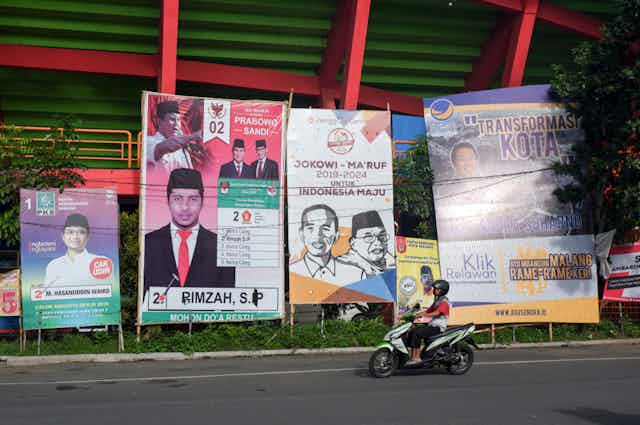The world’s most populous Muslim majority nation, Indonesia, is the third-largest democracy in the world. The archipelagic country in Southeast Asia has hundreds of ethnic groups, and half of the population are women.
But my recently published research shows that male politicians from the country’s most populous island, Java, dominate Indonesia’s parliament.
My research found the majority of elected candidates during Indonesia’s 2014 general election were Muslim married men in their 40s to 60s. They mostly reside in Java and are university graduates.
This tendency has discouraged women from entering politics as the system tends to prioritise men.
The result is low representation of female politicians in Indonesia’s parliament. In the 2014 legislative election, only 97 out of 2,467 female candidates, or less than 4%, won seats. This result dragged women’s share in the parliament to 17.03%, down from 18.03% in the previous election.
Non-inclusive parliament system
For my research, I looked into the characteristics of over 6,000 candidates in the 2014 elections. What I found from various sources indicated that Indonesia’s parliament is far from representative of Indonesian diversity.
More than 80% of the seats in the 2014 legislative election went to men. Of these elected lawmakers, 75% lived in Java, and 90% of them were university graduates. Less than 2% were young lawmakers.
People between the ages of 40 and 59 were over-represented. They accounted for 12.89% of the national population, but almost 39% of legislators in the parliament were in this age group. The same applies for the 50-59 group, which accounted for 8.43% of the national population.

This unfair representation starts with the nomination process. In the 2014 election, only 37% of the candidates were women, and 27% of them lived outside Java. Only 5% of them represented the young generation between 20 and 29 years old.
Women’s loss
Female lawmakers’ share in the parliament still stands below 20% despite a 30% gender quota policy. The policy, introduced in 2004, requires parties to nominate at least 30% female candidates.
The persistent small number of female lawmakers in the parliament shows that the policy has not been effective in encouraging women’s electability.
Some party leaders have defended their decision by saying that high-quality female candidates are really difficult to find. They also argue women’s electability is relatively low.
Such preference is apparent when the parties tend to put male candidates at the top of voting cards while placing female candidates at the bottom. The lower a candidate is placed in the voting cards, the less likely he/she is to win. Every time candidates’ positions in the voting cards drop one level this reduces their odds of winning by 63.5%.
Of the elected female candidates in the 2014 election, 47% were running as the number one candidate. Of the elected male candidates, 65% were running as the number one candidate. As political parties tend to nominate male politicians in the top positions, this creates a significant disadvantage for women politicians.
Another discouraging trend showed most elected female candidates were related to incumbents. Almost half of them (45 of 97) are either married or blood-related to political leaders.
This shows that men still take control of politics and women can’t win without support from leading male politicians.
Not only does this hurt women’s participation in politics, but it also can lead to political oligarchy. This is a political system in which a small number of party elites and their families dominate decision-making processes in the parliament. As the majority of party elites are men, this can further hurt women’s participation in the country’s political systems.


